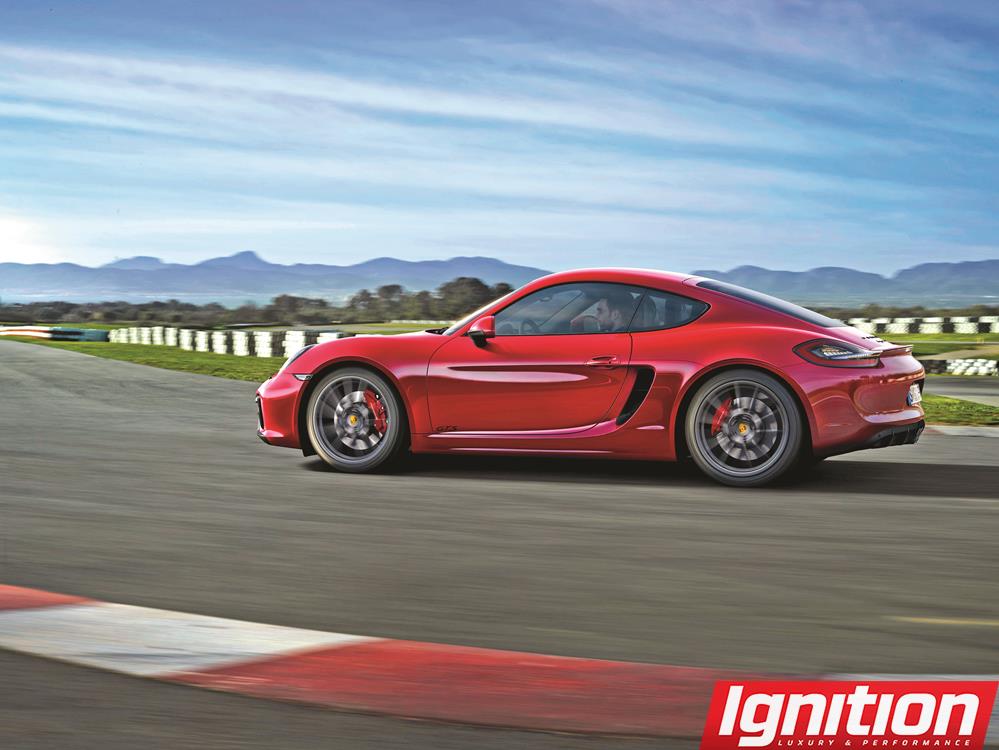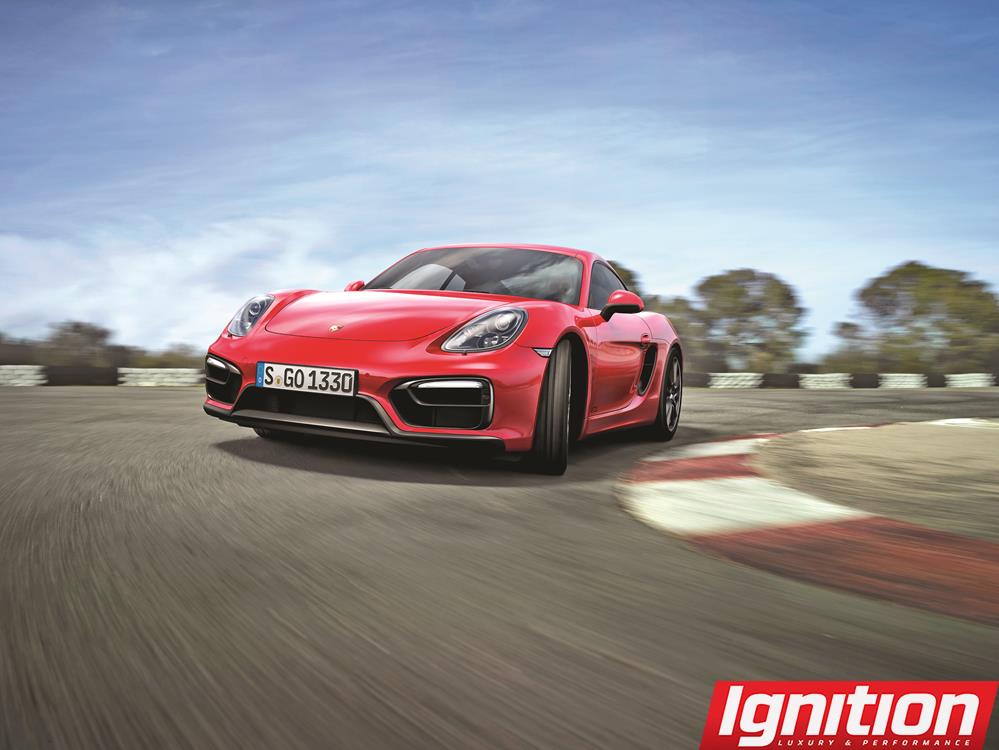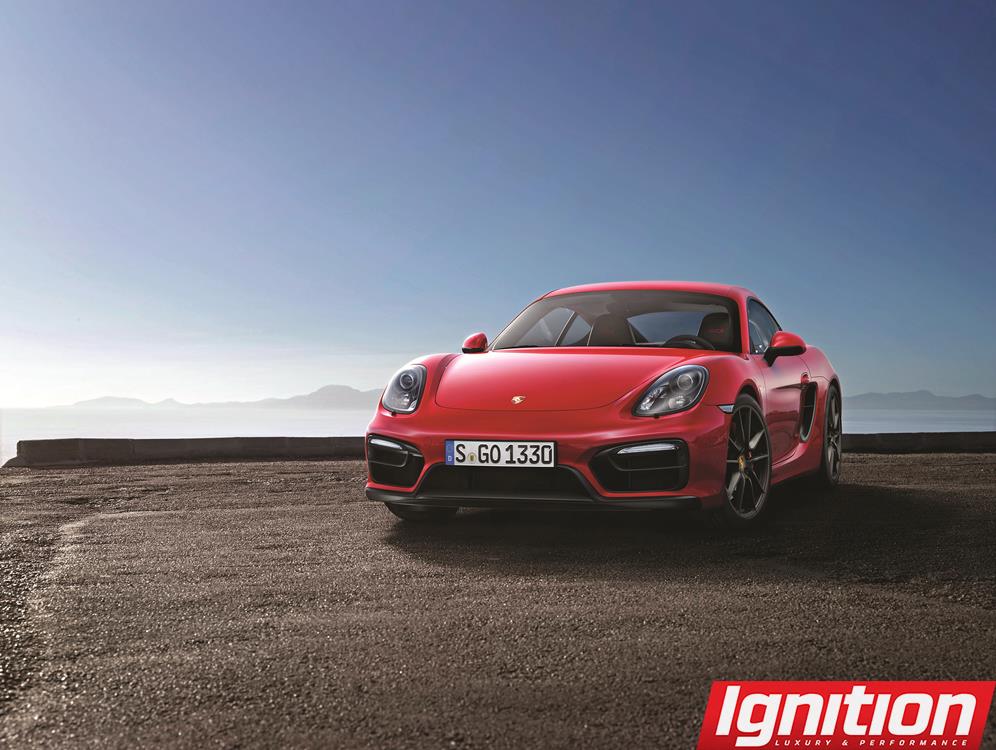Closed-top champion
As Porsche’s range expands (even models themselves have to differentiate from one another) we’re beginning to see a diversity in the company’s lineup to an extent like never before. Previously, it was just the 911 range that had almost countless models, from the classic Carrera to the hardcore, track-focused GT3 RS.
For the second generation Cayman, Porsche has unleashed that same product strategy and no longer is the entry-level two-door limited to base and S spec. Cayman buyers now have the choice of base, S, GTS and GT4 models, and while I’m keen to get my hands on the GT4, this road test is all about the GTS.
Porsche resurrected the GTS placard a few years ago, taking its inspiration from the 1963 904 GTS, a sports car that was intended for double duty – a car you could take from the road to winning races on any given circuit.
Like the 904, the GTS is completely usable as a road car with a broad range of capabilities, but the fact it has two generous trunks is what makes the Cayman a superb choice for a daily driver, if not an eminently capable second car.
Unlike the days of the 904, racing your road car isn’t exactly possible any more because, alas, a road car needs a pile of safety gear to meet racing rules and driving a race car on the road isn’t all that enjoyable given the demands of racing, nor is it legal in most jurisdictions. Yes, those magical days are indeed gone. Still, the Cayman GTS is the sort of sports car one could drive daily and take to the track on weekends. You see, the GTS name means something in the world of Porsche.
In modern Porsche practice, any model bearing the GTS starts with key performance components fitted as standard equipment. Among them, and perhaps most importantly, the engine from the Cayman S is here, but it makes 15 more horsepower than the S, for a total of 340 horses at a remarkably high 7,400 rpm. The dry sump 3.4-litre flat six makes its peak torque of 280 lb-ft from 4,750 to 5,800 rpm.
This engine is one that loves to rev all the way to redline. It’s exceptionally responsive through the entire rev range, especially the top half. Enhancing the drive is Porsche’s fantastic sport exhaust, otherwise an option on lesser Caymans, and it sounds glorious. I found myself driving with the windows down as often as possible.
While a dual clutch transmission undoubtedly accelerates faster than a manual – and even Porsche says so – the row-your-own, six-speed box is infinitely more satisfying and truly completes the GTS package. The clutch pedal has the right amount of heft, as well as the necessary feel to determine the bite point, which only serves to make the driving experience more visceral and enjoyable. Shifting is direct and the gates are defined well enough to avoid even the laziest missed gear. The shift action would benefit with a little more weight for more positive gear changes.
The GTS philosophy also ensures that Sport Chrono is standard equipment. In short, it gives the drivers a range of drive mode settings that adjust throttle response, traction and stability system engagement, as well as suspension dampening. However, in Sport Plus mode, there is a throttle blipping downshift feature that can’t be switched off, making it mildly annoying to old school heel-and-toe downshifters who prefer to blip themselves.
Both the steering wheel and shifter are covered in Alcantara, the material being a GTS theme as you’ll see, and when you’re behind the wheel, the tactile experience is superb. The material lends a feeling of purposeful luxury, since Alcantara is the best material for these applications. On the wheel and shifter, it encourages you to actively engage in the act of driving the Cayman.
Alcantara also finishes the seats, centre console and the headliner in the GTS and, with the contrasting stitching of the GTS interior package option, the interior is completely distinctive. Duplicating this in any other Cayman would be very expensive. The seats, however, aren’t the best they could be, at least when you consider what’s available in Porsche-land.
The first Cayman GTS I drove in Germany had the fantastic two-piece carbon fibre bucket seats, in addition to all of the other GTS goodness, and immediately became the top GTS I’ve driven. In North America, however, those brilliant seats aren’t available in GTS trim and are relegated to the Cayman GT4 model exclusively. Instead, our GTS mule uses the regular sport seats, which are perfectly comfortable, but I’d prefer the support of the carbon buckets in this Cayman given the more sporting character of the GTS. As tested, the Cayman GTS tallied up to $102,995
 Underneath, a 20 mm lower sports suspension is available as a no-cost option and I highly recommend it. By nature, it improves handling by lowering the centre of gravity, of course, but the GTS looks much better sitting lower to the ground. I thought that driveway approach angles would be compromised, but in reality that was never the case. Just the normal care and shallow approach angles are required for pulling into steeper driveways.
Underneath, a 20 mm lower sports suspension is available as a no-cost option and I highly recommend it. By nature, it improves handling by lowering the centre of gravity, of course, but the GTS looks much better sitting lower to the ground. I thought that driveway approach angles would be compromised, but in reality that was never the case. Just the normal care and shallow approach angles are required for pulling into steeper driveways.
All GTS models include damping by the multi-mode Porsche Active Suspension Management, which truly has distinct levels of wheel and body control, and it works so seamlessly that I’ve never been able to find fault with the system in any Porsche. And brakes? Porsche always over-delivers on braking, whether it’s capacity or feel and control, and they work wonderfully here, too.
The GTS rides on 235- front and 265-section rear tires and, on the surface, that doesn’t seem like a lot of tire for a 340-horsepower mid-engined sports car, but the Goodyear Eagle F1s do a spectacular job of giving the GTS a tremendous amount of traction, as well as control at the limit.
Sure, being able to hustle and play with the GTS at its limits is one thing, but it’s the balance of this car’s overall platform that makes it truly special. Given the Cayman’s size, layout and utterly superb steering, driving the GTS is sublime.
It reacts to inputs almost telepathically, it seems, and that’s because the quality of this car’s feedback is exceptional. Whether it’s the steering wheel, brake pedal or seat-of-the-pants chassis feel, you’re in direct communication with each of the four contact patches at all times. And when you spec a GTS like this one, the manual transmission only heightens your level of engagement with the car.
While many sports cars are entertaining and easy to drive, very few of them are able to create that special bond with the driver. The GTS has the ability to do that – to make the driver one with the machine.

ESSENTIALS
2015 Porsche Cayman GTS
Base Price: $85,800
Engine: 3.4L flat-6
Horsepower: 340 hp @ 7,400 rpm
Torque: 280 lb-ft @ 4,750-5800 rpm
Configuration: MR
Transmission: 6-speed manual
Dry Weight: 1,345 kg
Tires: Goodyear Eagle F1 (235/35 R20 front, 265/35 R20 rear)
Fuel Economy Ratings (city / hwy. / comb.): 12.1 / 8.9 / 10.5 L/100 km
Warranty (mos / km): 36 / unlimited
By the Numbers
$250/hp (calculated w/ base MSRP)
100 hp/L (engine displacement)
229.32 hp/ton (horsepower to weight)
3.95 kg/hp
10.5 L/100 km (manual – combined)
Options on Test Vehicle: Carmine Red paint ($2,950), GTS Communication package ($4,200); 20-inch 911 Turbo Design wheels ($1,640); ParkAssist front and rear /w reversing camera ($1,730);convenience package ($1,030); infotainment package /w BOSE sound system ($4,560); 20 mm lower sport chassis ($0).


























